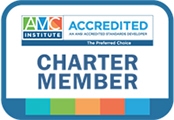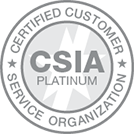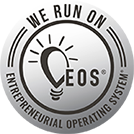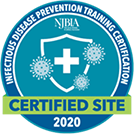As the U.S. workforce moves away from requiring traditional four-year degrees (70% of U.S. jobs now require less than a bachelor’s degree), credentials have become a critical and formative aspect of workforce development. Industries such as healthcare, construction, hospitality, and manufacturing rely heavily on credentialing to ensure that professionals are skilled and ready to succeed in their fields.

The Role of Associations in Credentialing
Organizations like associations and membership bodies are perfectly positioned to offer these credentials, given that they can bridge the gap between the skills employers require and the training that individuals currently possess. Moreover, a comprehensive education and certification program provides an association with the opportunity to continuously engage with its own industry and to promote its image as a vital resource.
Associations and credentialing bodies are in a unique position to deliver value by leveraging their strengths:
- Industry expertise: Associations already have access to a broad member base and an understanding of industry standards.
- Established platforms: Learning Management Systems (LMS) and Certificate Management Systems (CMS) make it easy to offer and track training, education, and credentials.
- Reputation: Longevity in the field helps organizations build trust, becoming go-to providers for credentials within their industries.
Marketing the Value of Your Organization's Credentials
In today’s competitive market, it’s not enough to offer a credential. Organizations need to effectively communicate the value of their credentialing programs to stand out. Marketing your credential is about more than just promoting its existence—it’s about showcasing its unique value proposition.
At Association Headquarters, we believe that the best marketing strategy for a credential starts by crafting clear, compelling messaging. This messaging should highlight both the functional and emotional benefits of the credential. Here are the key elements to marketing the value of a credential:
- Highlight the Value Proposition: Whether it’s industry recognition, skill enhancement, or career advancement, potential certificants need to understand why they should choose your credential over others.
- Use Targeted Communication: Your credentialing program should speak directly to its audience. Understanding the needs of the industry and tailoring your messaging to address those needs will attract more qualified leads and increase conversions.
- Showcase the Impact: Potential applicants are more likely to engage if they see how your credential has helped others. Share success stories, testimonials, and data that highlight the positive impact of your program on careers and professional growth.
- Differentiate From Competitors: Highlight what sets your program apart, such as the expertise of your organization, the rigorous standards your credential meets, or the practical skills your program delivers.
- Leverage Technology: Utilizing CMS systems, social media, email campaigns, and your organization’s website can amplify the reach of your credentialing and make it more accessible to a broader audience.
A well-rounded marketing strategy also emphasizes emotional connection, linking the credential to professional success and personal fulfillment. By connecting your audience to the purpose and value of the credential, you foster loyalty and engagement that helps your program grow.
Credentialing programs offer a unique opportunity for associations to contribute to industry development and remain relevant in a rapidly changing landscape. By leveraging existing expertise, utilizing technology, and crafting strategic marketing initiatives, organizations can ensure their credentialing programs not only thrive but provide lasting value to professionals and industries.




